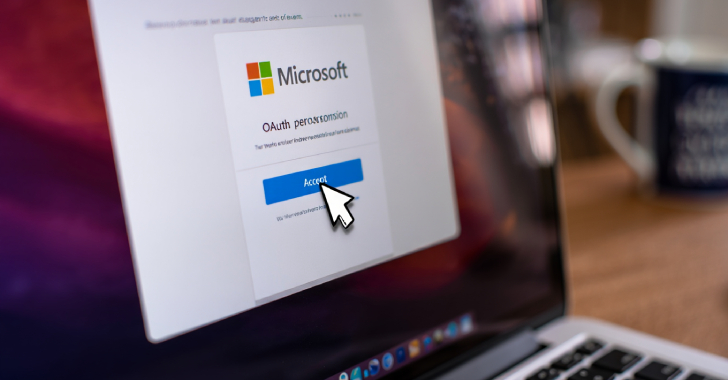
Hybrid & Cloud Security: Best Practices for Protecting Multi-Cloud Data Centers
Introduction
As businesses scale their operations, many are shifting to hybrid and multi-cloud environments to improve agility, cost efficiency, and performance. Hybrid cloud architectures—which combine on-premise data centers with public and private cloud services (AWS, Azure, Google Cloud, etc.)—have become the foundation of modern IT infrastructure.
However, hybrid and multi-cloud models introduce complex security challenges. Organizations must secure workloads across different platforms, manage multiple cloud vendors, and enforce consistent security policies. Without a robust security strategy, businesses risk data breaches, compliance violations, and costly downtime.
This article explores the top security challenges in hybrid and multi-cloud data centers and best practices for protecting them from cyber threats.
Why Hybrid & Multi-Cloud Security is Critical
- Expanding Attack Surfaces & Complexity
🌍 Hybrid cloud environments increase the number of entry points for attackers.
- Data is stored and processed across multiple clouds, on-premise servers, and edge locations.
- Cloud applications and APIs introduce new vulnerabilities.
- Remote access and third-party integrations expand security risks.
🔹 Example: The 2021 Accellion cloud storage breach exposed millions of customer records due to misconfigured cloud security controls.
- Lack of Unified Security Policies Across Clouds
⚖️ Different cloud providers have different security configurations and compliance standards.
- Security policies may vary between AWS, Azure, and Google Cloud, leading to inconsistent protections.
- Organizations struggle to enforce uniform identity and access management (IAM).
- Compliance with ISO 27001, SOC 2, NIST, HIPAA, and GDPR becomes more complex.
🔹 Example: In 2022, a major financial institution failed to apply consistent security settings across multi-cloud workloads, leading to a data breach exposing 500,000 customer records.
- Misconfigurations & Insider Threats
🔓 Cloud misconfigurations remain one of the leading causes of data breaches.
- Over-permissive access controls expose sensitive data.
- Insider threats—whether malicious or accidental—can result in data exfiltration.
- Cloud misconfigurations can leave databases publicly accessible without proper encryption.
🔹 Example: In 2019, Capital One suffered a breach when a former AWS employee exploited a misconfigured firewall, exposing 106 million customer records.
Best Practices for Securing Hybrid & Multi-Cloud Data Centers
- Implement a Zero Trust Security Model
🔐 Zero Trust assumes no user, device, or network should be trusted by default.
✅ Enforce Least Privilege Access (LPA) – Restrict users to only the resources they need.
✅ Require Multi-Factor Authentication (MFA) – Secure privileged accounts with strong authentication methods.
✅ Micro-Segment Networks & Workloads – Isolate cloud environments to prevent lateral movement in case of a breach.
✅ Apply Continuous Monitoring & Adaptive Security Policies – Use AI to detect real-time access anomalies.
🔹 Example: Google Cloud’s BeyondCorp Zero Trust model eliminates VPN access, requiring identity-based authentication for every request.
- Strengthen Identity & Access Management (IAM)
🔑 IAM is the backbone of hybrid cloud security—ensuring only authorized users access critical data.
✅ Adopt Cloud-Based IAM Solutions – Use AWS IAM, Azure Active Directory, and Google Cloud Identity.
✅ Automate Role-Based Access Control (RBAC) & Attribute-Based Access Control (ABAC) – Enforce access rules based on user roles and real-time risk factors.
✅ Use Just-In-Time (JIT) Access Controls – Grant temporary access only when needed, reducing the risk of credential abuse.
🔹 Example: A global e-commerce company prevented unauthorized access to customer payment data by implementing JIT IAM policies across its hybrid cloud environment.
- Secure APIs & Cloud Workloads with AI-Powered Threat Detection
🤖 AI-powered security analytics help detect unusual behavior across multi-cloud environments.
✅ Deploy AI-Driven SIEM (Security Information & Event Management) Tools – Analyze cloud activity in real time to detect unauthorized access attempts.
✅ Monitor API Traffic for Anomalies – Prevent API abuse and cloud-based attacks like cross-tenant exploitation.
✅ Use AI-Powered Threat Hunting – Identify unknown cyber threats before they escalate.
🔹 Example: Microsoft Azure Sentinel uses machine learning to detect cloud-based threats, allowing security teams to respond in real-time to malicious activities.
- Automate Cloud Security Configuration Management
⚙️ Misconfigurations are a leading cause of cloud data breaches—automation helps eliminate human error.
✅ Use Cloud Security Posture Management (CSPM) Tools – Continuously audit cloud configurations to ensure compliance with best practices.
✅ Implement Automated Compliance Frameworks – Enforce security policies aligned with ISO 27001, SOC 2, and NIST 800-53.
✅ Enable Infrastructure-as-Code (IaC) Security Policies – Prevent misconfigurations before deploying cloud environments.
🔹 Example: Netflix uses automated security tools like Security Monkey to continuously monitor AWS, GCP, and Azure environments for policy violations.
- Encrypt Data at Rest, In Transit, & During Processing
🔒 Data must be encrypted across all stages to prevent unauthorized access.
✅ Use Cloud-Native Encryption Tools – AWS KMS, Azure Key Vault, and Google Cloud KMS automate key management.
✅ Enforce End-to-End Encryption for Data Transfers – Secure cross-cloud communications with TLS 1.3 and VPNs.
✅ Implement Homomorphic Encryption for Secure Data Processing – Protect data even while in use by cloud applications.
🔹 Example: Dropbox uses end-to-end encryption across AWS and Google Cloud to secure customer data.
- Strengthen Disaster Recovery & Incident Response Plans
🚨 A multi-cloud disaster recovery strategy ensures business continuity in case of a security breach.
✅ Implement Cloud-Based Disaster Recovery as a Service (DRaaS) – Automatically replicate workloads across multiple cloud providers.
✅ Conduct Regular Cybersecurity Drills & Tabletop Exercises – Simulate real-world ransomware and data breach scenarios.
✅ Enable Real-Time Security Monitoring & Automated Incident Response – Detect and contain cloud threats instantly.
🔹 Example: A leading financial services firm avoided a major cloud outage by implementing multi-region failover disaster recovery policies across AWS and Azure.
The Future of Hybrid & Multi-Cloud Security
🚀 As organizations continue adopting hybrid and multi-cloud architectures, security strategies must evolve to address emerging threats.
Key Trends in Cloud Security:
✅ AI-Powered Cybersecurity – Automating threat detection and response with machine learning.
✅ Zero Trust Everywhere – Expanding Zero Trust principles across hybrid environments.
✅ Cloud-Native Security Solutions – Integrating serverless security tools for microservices and containers.
✅ Automated Cloud Compliance Management – Using AI-driven tools to enforce real-time regulatory compliance.
🔹 Example: AWS, Google Cloud, and Microsoft Azure are investing heavily in AI-driven security automation, ensuring that multi-cloud environments remain secure against evolving cyber threats.
Conclusion
Securing hybrid and multi-cloud data centers requires a proactive, AI-powered, and automated security approach. Organizations must adopt Zero Trust, strengthen IAM, automate compliance, and secure APIs & workloads to mitigate risks.
Key Takeaways:
✅ Adopt Zero Trust & Least Privilege Access to Reduce Attack Surfaces.
✅ Use AI & Automation for Threat Detection and Cloud Security Monitoring.
✅ Encrypt Data Across All Environments to Prevent Unauthorized Access.
✅ Continuously Monitor & Audit Cloud Configurations to Avoid Misconfigurations.
✅ Develop a Multi-Cloud Disaster Recovery Plan for Business Continuity.
By implementing these best practices, organizations can ensure strong security, regulatory compliance, and resilience across hybrid and multi-cloud data centers.
Contact Cyber Defense Advisors to learn more about our Data Center Cybersecurity Services solutions.





